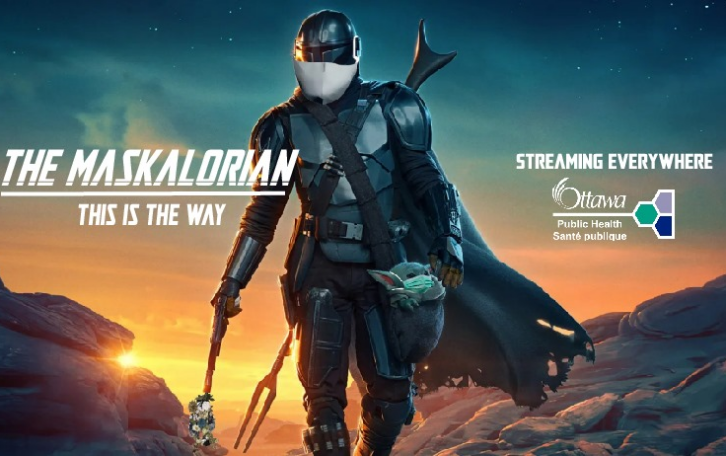Is Mental Health Funny?

Subscribe to Catalyst
Subscribe to get our magazine delivered right to your inbox
Related Articles
Subscribe to Catalyst
Subscribe to get our magazine delivered right to your inbox
Related Articles
When you think of mental health, do you want to have a good laugh?
Humour is one of the most effective ways brands have to capture attention and be memorable. It’s not always easy, but if you can strike the right balance between tone and your target market’s funny bone, it’s gold.
Unfortunately, for most health brands, humour represents pitfalls. Fears of poor taste or making people feel minimized are real. This fear of funny means, for the most part, we are left tugging on heartstrings or seeking inspiration from the patient as brave soldier.
In fact, a few years ago, SickKids launched a brilliant campaign where they combined the two with children as gritty-eyed warriors fighting illness and injury. While there were critics of the VS Limits campaign, it did its job, surpassing the $1.5-billion goal.
When you are a mental health advocate, there is a lot on the line. With so much stigma associated with mental health, anything that might further confuse issues makes the use of humour thorny. Yet, if you are struggling with mental illness, you don’t always want to be immersed in the dark imagery that often accompanies stories of mental distress. Unfortunately, for a long time, mental health meant a series of images of people with their heads in their hands.

We contain multitudes
The reality is much more dynamic. Mental health discussions, even the toughest of them, can be about optimism, change, and recovery. We don’t have to go the warrior route. It is possible to go for and succeed with the holy grail of healthcare promotion: humour.
Ottawa Public Health has been a champion of that approach. When speaking to Kevin Parent, the social media lead, he noted that while the public health unit is often funny, they can get away with it because, first and foremost, they are always authentic. That means they express a variety of voices on their feed. Some are full of comedic relief; others are serious, sad, educational, and informative – essentially, the range of human emotions.
For example, during the pandemic, mask discussions lost all humour for me, and yet my inner sci-fi geek was tickled when they featured The Maskalorian with the quote, “This is the way.” It made a tiresome topic fresh and funny.
“We do everything we can to stay authentic,” Parent says. “If you understand your audience, if you take the time to know them, then you’ll know what they think is funny. You’ll also know when they need a laugh. It isn’t that a particular thing is right, and another is wrong; it’s more a case of what’s right – for right now.”
So, during the emergency phase of the pandemic, maybe mask-breath jokes were too soon – though, these days, most people would have experienced this and get the reference.
In recent years, constraints that have kept humour at bay in the health sector have fallen due to the popularity of social media influencers and the acknowledgement by health professionals that the voices of those with lived experiences are not only relevant but important in everything from research to recovery.
The shift in perspective was aptly demonstrated when that bastion of academic rigour, Harvard University, conducted best practice educational sessions with TikTok mental health influencers Rachel Havekost and Trey Tucker. The engagement brought better health information to the public through those popular feeds. However, it’s not always a successful partnership if the fit between knowledge and theatre isn’t right. No matter how well-intentioned or researched, if the content isn’t entertaining, it does not get viewed.
Some experts advise healthcare marketers entering the humour arena to be gentle. That’s not bad advice, but it does leave the content somewhat bland. When the Mental Health Commission of Canada decided to refresh a few years ago, it wanted to bring the brand into the light and occasionally tickle the funny bone. This meant banishing images that conjured deep unhappiness. You know them: a dark day and a sad person sitting alone on a bed, facing a corner. It’s usually in black and white to reinforce the glumness of the subject matter. If that wasn’t enough, there are also lots of clouds.
Silver linings
The change to optimistic imagery wasn’t simple. As many experts insisted, mental health isn’t always sunshine and daisies. The challenge is understanding what viewers are looking for so that good information can be digested.
I am not alone in saying nothing about dreary imagery draws me in and makes me want to learn, see, or hear more. If I also get served a lecture using technical language, I’m out. It’s not that dark and difficult times are never part of the mental health journey, but contributing to doom scrolling hardly seems progressive. Nor is it that viewers don’t want well-researched information, but anyone who has ever had a loss of mental health knows the process is not simple. There are good and bad times, sometimes in the same 24 hours. Regardless of where you are on the continuum, a little humour can go a long way. A good laugh can reduce stress and tension, provide relief from pain, improve your mood, and has a host of other well-documented impacts.
The issue is finding the right balance of information and entertainment. Infotainment is easy to say and hard to achieve. It’s fine to explain that laughter is the best medicine and cite a series of research studies, but putting humour into play while delivering information responsibly to an audience that often includes people at risk is difficult.
Mental health can be funny, but it can also be sad, scary, and complicated. For advocates, advertisers, and audiences, getting the balance right is not only essential, but it can also be life-altering.
Further reading: No more doom and gloom: How we’re using photography to inspire hope.
Resource: Fact Sheet: Common Mental Health Myths and Misconceptions.

Debra Yearwood
A communications pro with more than 20 years of executive experience in the health sector, expertly navigating everything from social marketing to crisis comms. When she’s not advising on the boards of Health Partners or Top Sixty Over Sixty, she’s busy finishing her book on thriving in later life (because why stop now?). Certified Health Executive by day, diversity advocate and magazine contributor by night—Debra’s the one you call when things need fixing or explaining.




